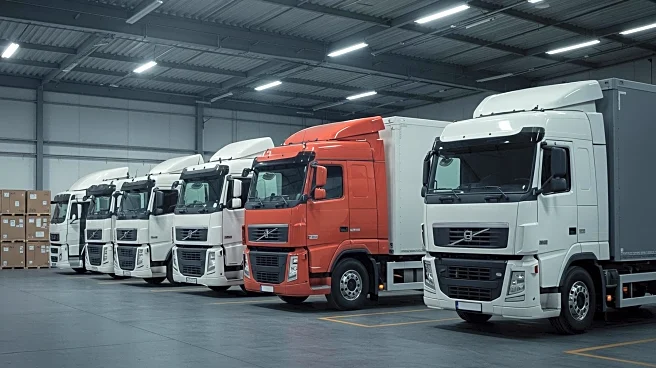Rapid Read • 8 min read
FleetOwner has emphasized the importance of retaining qualified truck drivers, noting that the cost of replacing a single driver can range from $5,000 to $10,000. The publication outlines several reasons why drivers leave their positions, including work-life balance issues, lack of career growth, poor communication, and health concerns. To address these challenges, FleetOwner suggests that companies should focus on driver engagement from the onboarding process, ensuring new drivers feel valued and supported. This includes involving senior management in training sessions and implementing driver incentive programs such as safety and clean inspection bonuses. Additionally, the publication recommends seeking driver input on vehicle specifications and maintaining clean vehicles, especially in slip-seat operations. Regular feedback and 'stay' interviews are also advised to address driver concerns proactively.
AD
The trucking industry is a critical component of the U.S. economy, responsible for transporting goods across the country. High turnover rates among truck drivers can lead to increased operational costs and disruptions in supply chains. By implementing effective retention strategies, companies can reduce these costs and maintain a stable workforce. This not only benefits the companies but also contributes to the overall efficiency and reliability of the transportation sector. Moreover, addressing drivers' concerns and improving their work conditions can lead to higher job satisfaction and productivity, ultimately benefiting the industry as a whole.
Companies in the trucking industry may begin to adopt the strategies outlined by FleetOwner to improve driver retention. This could lead to a shift in industry standards, with more emphasis on driver engagement and satisfaction. As these practices become more widespread, it is likely that turnover rates will decrease, leading to more stable and efficient operations. Additionally, companies may explore further innovations in driver incentives and vehicle specifications to enhance driver experience and retention.
The focus on driver retention also highlights broader issues within the trucking industry, such as the need for better work-life balance and career growth opportunities. Addressing these issues could lead to long-term cultural shifts within the industry, promoting a more supportive and inclusive work environment. Furthermore, as companies prioritize driver health and wellness, there may be increased attention on the physical and mental well-being of drivers, potentially leading to new health initiatives and programs.
AD
More Stories You Might Enjoy










